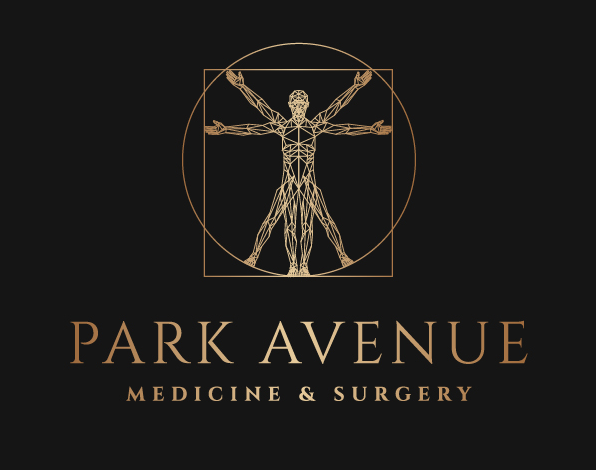Migraines: Just Another Headache?
Migraines affect nearly one billion people around the world [1]. In the United States alone, 18% of women get a migraine every year, as do over 6% of men, with a lifetime risk of 43% and 18% respectively [2]. These rates differ with age. Migraines generally begin around the ages of 15 and 24, and are most frequent around 35 to 45 years of age. Migraines are sometimes even seen in children, with a slightly higher preponderance towards boys [3]. This changes during adolescence when the condition becomes more common in females, a pattern that continues for the rest of the life, as elderly women having twice the preponderance for migraines than men.
Despite the immense impact of this disease, it is still considered just another headache. In actuality, a migraine particularly differs from other forms of cephalalgia in that it is a recurrent, throbbing, unilateral headache that is often accompanied with other symptoms like nausea and disturbed vision. Most typical migraines last from 4 to 72 hours. The patient appears particularly normal in between any two successive episodes. In a study by the International Headache Society, migraineurs (migraine sufferers) were retrospectively evaluated for the assessment of the relationship of headache intensity and duration in migraine with other symptoms of migraine. 1“Headache intensity correlated with nausea, vomiting, photophobia, phonophobia, dizziness (all P = 0.000), running of the nose/tearing of the eyes (P = 0.007), and osmophobia (P = 0.044), but not with diarrhoea or taste abnormality. Headache duration correlated only with osmophobia (P = 0.002) and taste abnormality (P = 0.005). Throbbing, pressure and stabbing pain correlated with most of the associated symptoms. Aching correlated only with taste abnormality.”
Migraine is a genetic neurological disease, the pathophysiology of which still remains to be clearly understood. According to professor Peter Goadsby, professor of neurology at King’s College London, “migraine is an inherited tendency to have headaches with sensory disturbances. It’s an instability in the way the brain deals with incoming sensory information, and that instability can become influenced by physiological changes like sleep, exercise and hunger.”
The World Health Organization asserts that a severe migraine attack can be as disabling as quadriplegia. Migraine triggers are almost always physiological, not emotional. However triggers can vary between migraine sufferers. Potential triggers include:
- Perfumes and fragrances.
- Bright and/or flickering lights, including fluorescent lighting.
- Loud noises and crowded places.
- Changes in the weather and/or altitude.
- Cigarette smoke; exhaust fumes; odors or fumes from chemicals, including some cleaning products.
- Certain foods, especially foods prepared with MSG and other preservatives.
Migraines do not only affect the patient physically. Due to the random tendency for migraine attacks, migraineurs are often unable to be emotionally available for their family and friends, and might even have to miss work. For some patients, migraine can be disabling to the extent that they qualify for Social Security disability benefits or for accommodation under the Americans with Disability Act. Essentially, migraines can affect the sufferer on multiple fronts, making it not only physically debilitating, but emotionally exhausting.
Migraine is as much a disease as is diabetes or asthma. It is imperative to identify and start the treatment of the disease as soon as possible to control its effects. It must also be understood that not all neurologists are migraine specialists. There is a shortage of qualified migraine specialists around the world in relation to the number of migraineurs. Regardless, finding a capable doctor is possibly the most crucial step in treatment. No two migraine attacks are the same, no two patients are the same, and therefore no two treatments can be the same--only a specialist can help. A recent national survey “Migraine in America 2016” [5] concluded that only 4 out of 10 people were satisfied with their ongoing treatments for migraine, despite having tried many options.
Besides managing the symptoms of migraines, the migraineurs have to face the stigma of having migraines in the society. The migraineurs constantly worry about disappointing people, as a result most of them hide their migraines from others or are embarrassed about having migraine attacks. This clearly affects their performances in their daily lives. The Migraine in America 2016 study concluded that out of the 3,923 migraineurs surveyed in the study, 93% mentioned that migraines affected their ability to work, 89% claimed that it affected their relationships with their partners, 87% found it difficult to attend school or college and 86% had a difficult relationship with their children. It gets difficult to trust migraineurs with handling little children because of the uncertainty and spontaneity of the attacks. This also limits the migraineurs from certain detailed tasks which require careful handling, such as performing surgery, working with heavy machinery, etc.
This past June was celebrated as National Migraine and Headache Awareness Month. But this does not mean we should stop spreading awareness. It is insensitive to isolate the migraineurs, saying that their pain is “just a headache,” when in reality it is far worse. If they had a choice, these patients would want nothing more than to be “get over it.” They would want to feel present in their own lives at their own wills, and not just in between attacks. The pain of migraine is in itself so severe and debilitating in some cases, and then the patients have to face the stigma of having encountered an attack in public. Just like patients with other diseases, migraineurs require the help, support and understanding of the people around them, apart from a good treatment regime.
Referencs:
- Vos, T; Flaxman, AD; Naghavi, M; Lozano, R; Michaud, C; Ezzati, M; Shibuya, K; Salomon, JA; et al. (Dec 15, 2012). "Years lived with disability (YLDs) for 1160 sequelae of 289 diseases and injuries 1990–2010: a systematic analysis for the Global Burden of Disease Study 2010". Lancet. 380 (9859): 216396. PMID 23245607. doi:10.1016/S0140-6736(12)61729-2.
- Bartleson JD, Cutrer FM (May 2010). "Migraine update. Diagnosis and treatment". Minn Med. 93 (5): 36–41. PMID 20572569.
- Hershey, AD (February 2010). "Current approaches to the diagnosis and management of pediatric migraine". Lancet neurology. 9 (2): 190–204. PMID 20129168. doi:10.1016/S1474-4422(09)70303-5.
- Kelman L, Tanis D. The relationship between migraine pain and other associated symptoms. Cephalalgia. 2006;26(5):548-553. http://dx.doi.org/10.1111/j.1468-2982.2006.01075.x. Accessed Jul 18, 2017. doi: 10.1111/j.1468-2982.2006.01075.x.
- Migraine in america 2016 national survey - health-union.com. . 2016. https://health-union.com/news/many-with-migraines-unhappy-with-treatments/. Accessed Jul 18, 2017.



